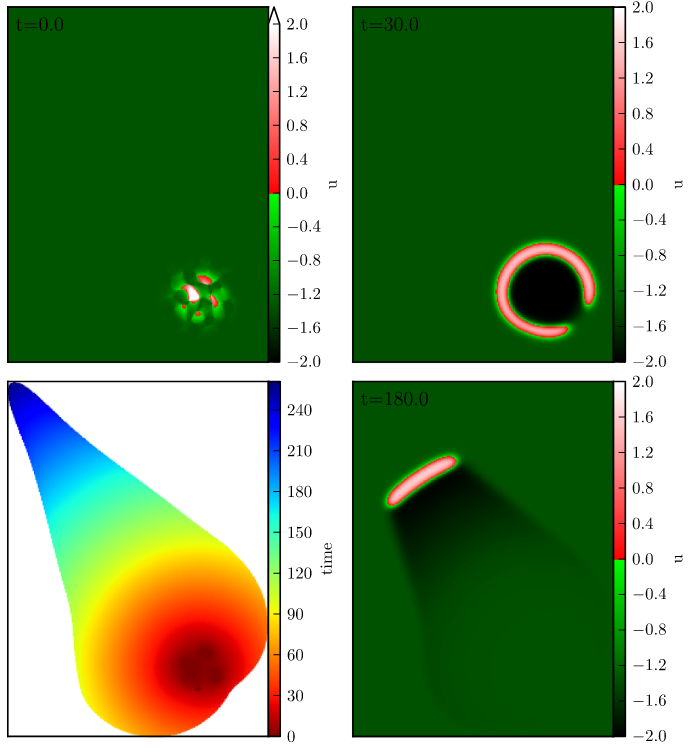Radial Basis Function Methods for Neural Field Models
Sage Shaw - University of Colorado Boulder, USA
June 12th, 2024
Collaborators

Prof. Zack Kilpatrick
University of Colorado Boulder, USA

Prof. Daniele Avitabile
Vrije Universiteit, Amsterdam
Outline
- Motivating Research
- Cortical Spreading Depression
- Radial Basis Function Interpolation
- Neural Field Model
- Radial Basis Function Quadrature Formulae
- Numerical Results
- Next Steps
Motivating Research
Spreading Depression
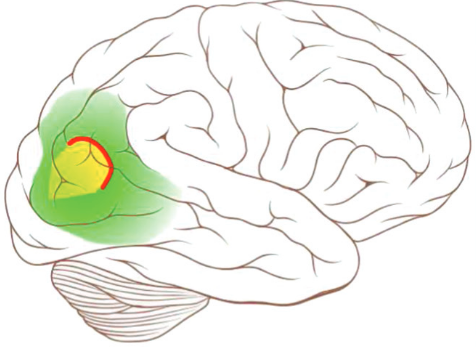
Zandt, Haken, van Putten, and Dahlem (2015)
Scintillating Scotoma
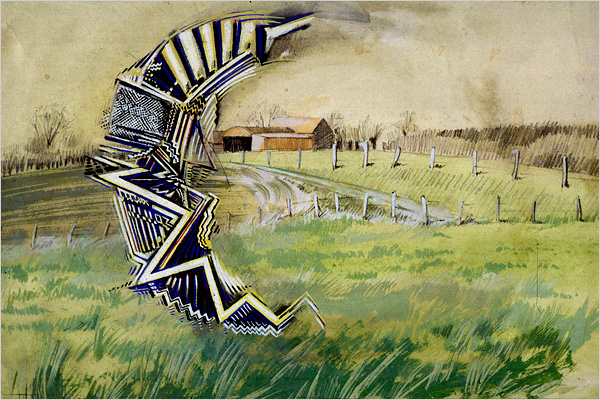
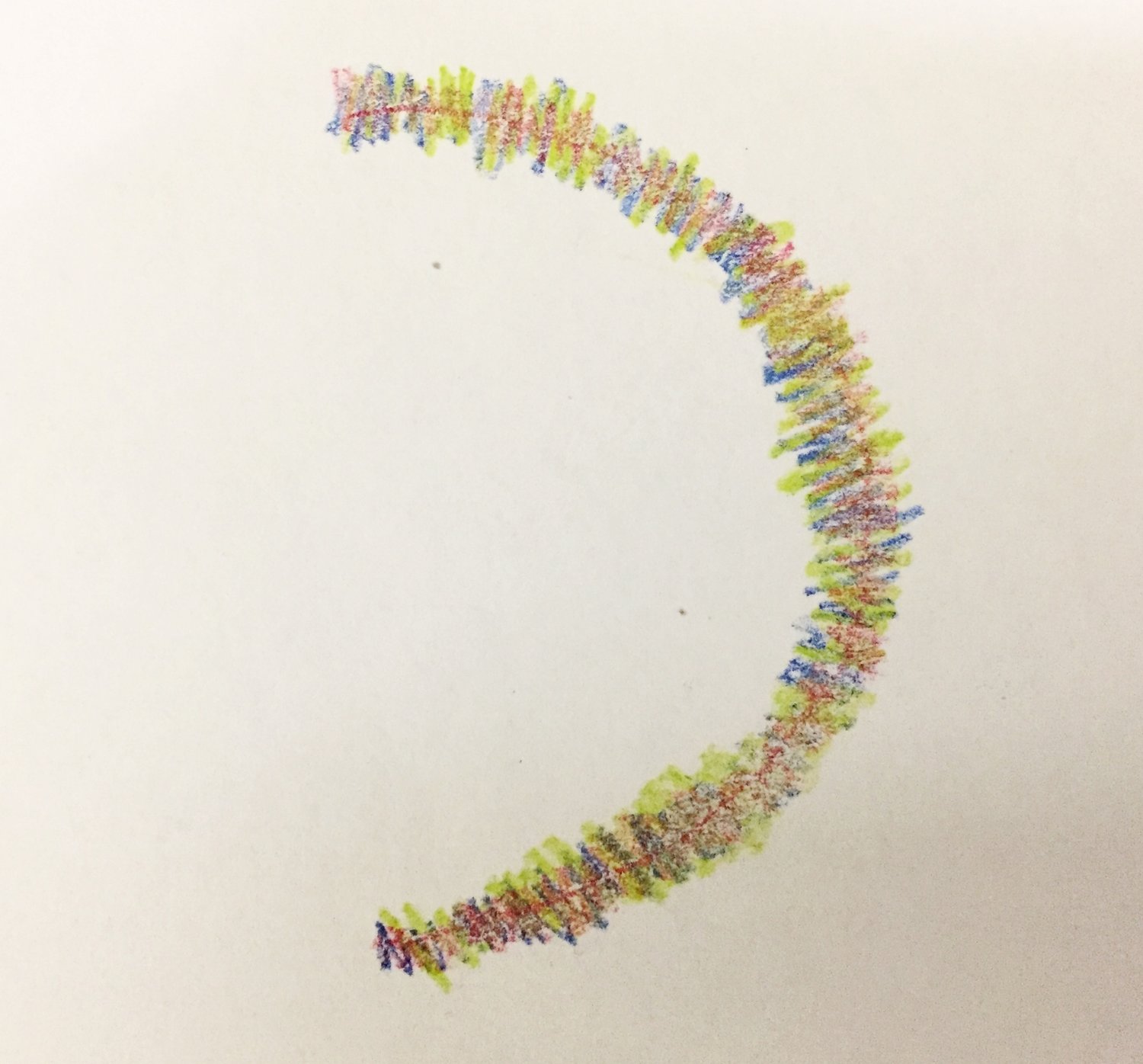
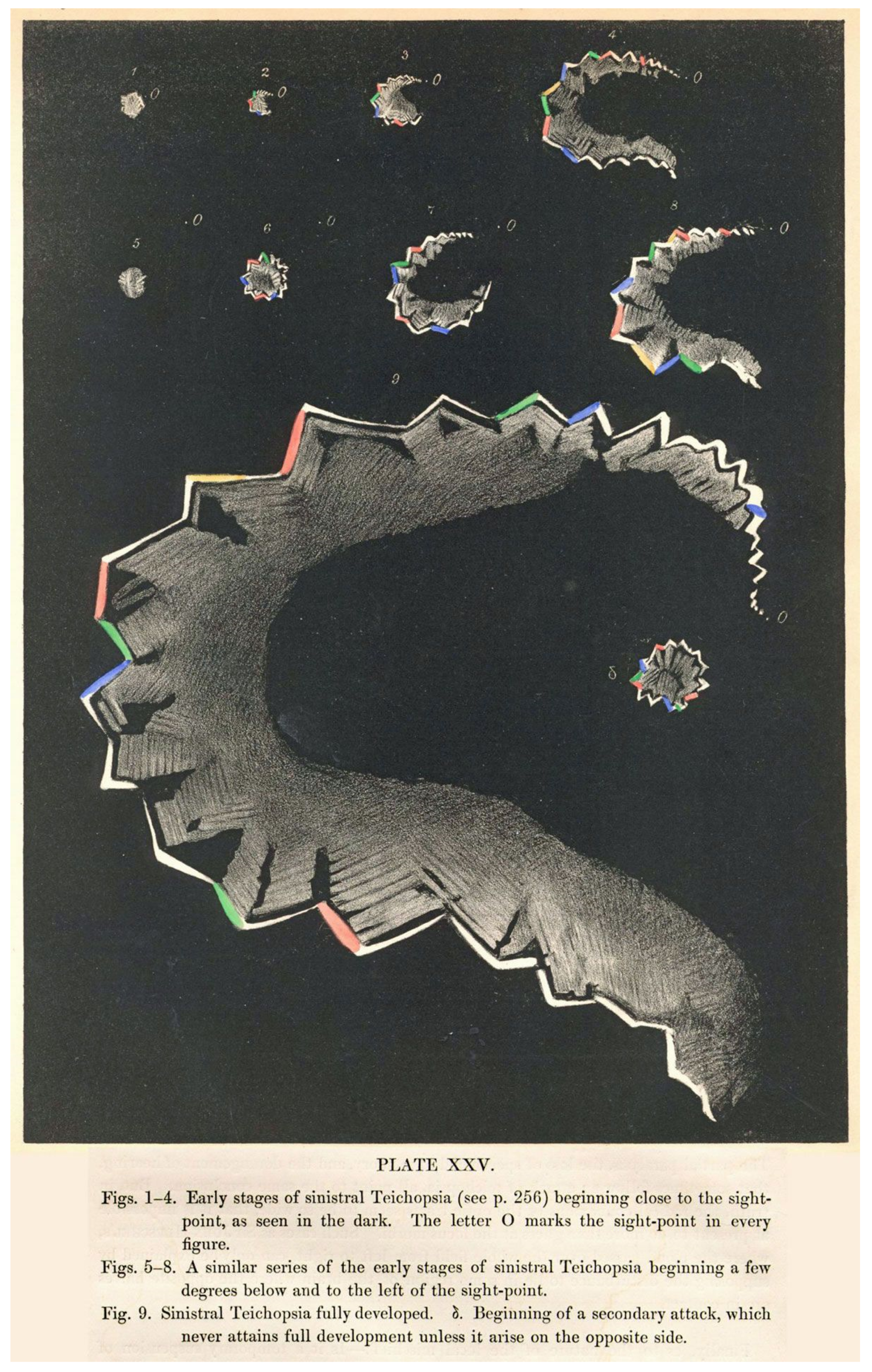
Reaction Diffusion on surfaces
$$\begin{align*} u_t &= \underbrace{3u - u^3}_{\text{excitable}} - \underbrace{v}_{\text{recovery}} + \underbrace{D \Delta_{\mathcal{M}}u}_{\text{diffusion}} \\ \frac{1}{\varepsilon} v_t &= u + \beta + K \underbrace{\int_{\mathcal{M}} H(u) \ d \mu_{\mathcal{M}}}_{\text{neurovascular}} \end{align*}$$
- Surface operators: $\Delta_{\mathcal{M}}, \int_{\mathcal{M}} \cdot d \mu_{\mathcal{M}}$
- Curvature affects speed and stability of waves
Coupled neural field and diffusion equation
$$\begin{align*} v_t &= -v + w \ast s_p(v, k) + g_v \\ k_t &= \delta k_{xx} + g_k(s, s_p, a, b) + I \end{align*}$$- Neural field model
- Coupled potassium concentration
- Models both ignition and propagation of CSD
A Turing Reaction Diffusion System
$$\begin{align*} u_t &= \delta_u \Delta_{\mathcal{M}} u + \alpha(1-\tau_1 v^2) + v(1-\tau_2 u)\\ v_t &= \delta_v \Delta_{\mathcal{M}} v + \beta(1-\frac{\alpha\tau_1}{\beta} uv) + u(\gamma-\tau_2 v)\\ \end{align*}$$Radial Basis Funtion Interpolation
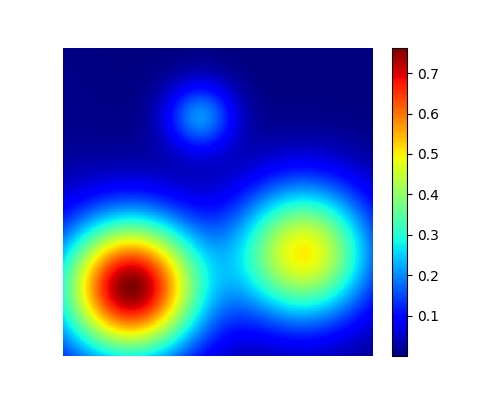
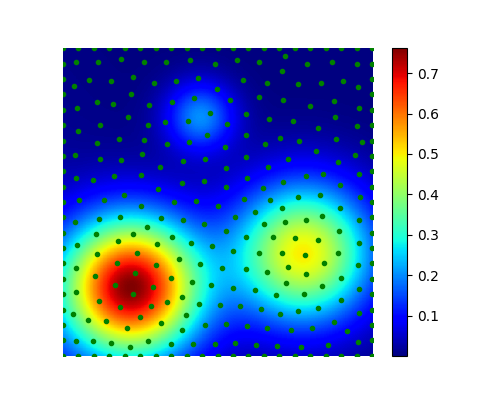
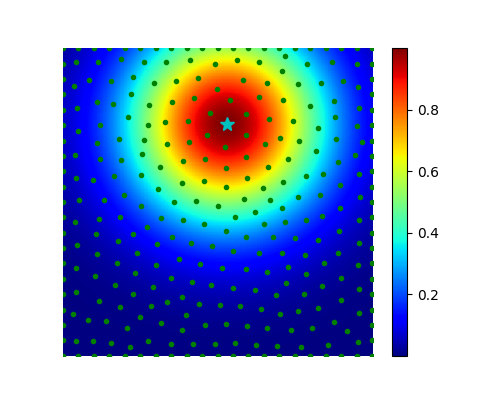
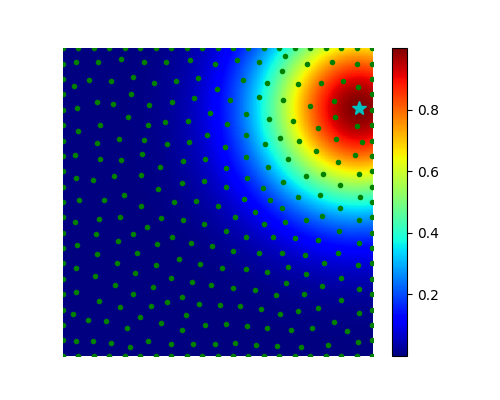
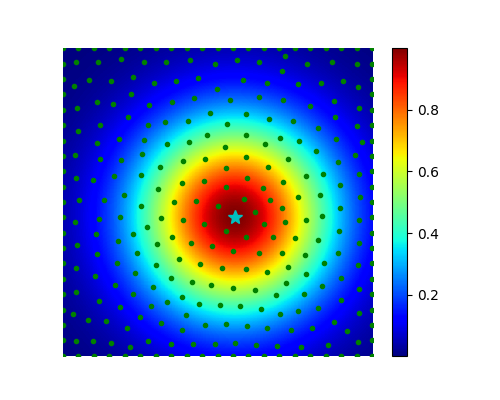
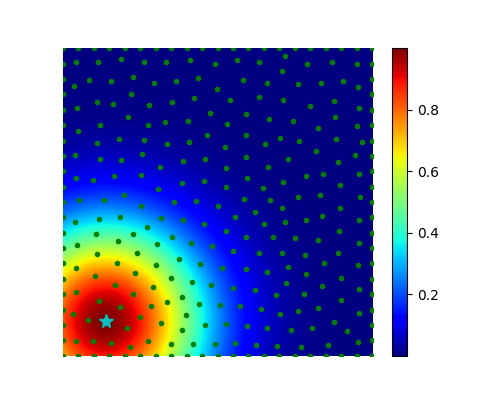
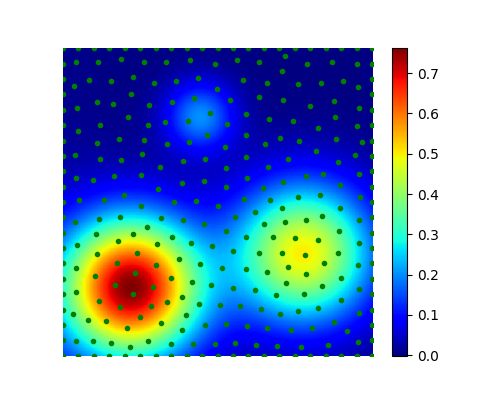
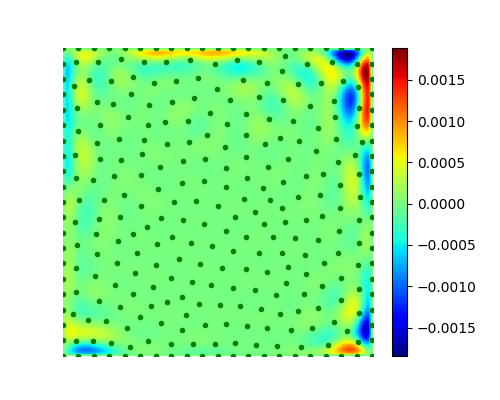
- Function to approximate
- Sample at scatterd nodes
- $\phi_j(\vecx) = \Phi(||\vecx - \vecx_j||)$
- $f(\vecx) \approx s(\vecx) = \sum_j c_j \phi_j(\vecx)$
- $\text{Error} \to 0$ as $n \to \infty$
RBF Interpolation Properties
- scattered nodes in any number of dimensions*
- mesh-free*
- arbitrary order of accuracy*
- can be used to find
- finite difference formulae
- quadrature formulae
Neural Field Model
Neural Field Model
$\partial_t \color{blue}{u}(t, \vecx) = -\color{blue}{u} + \int_{\Omega} \color{green}{w}(\vecx, \vecy) \color{red}{f}[\color{blue}{u}(\vecy)] d \vecy$
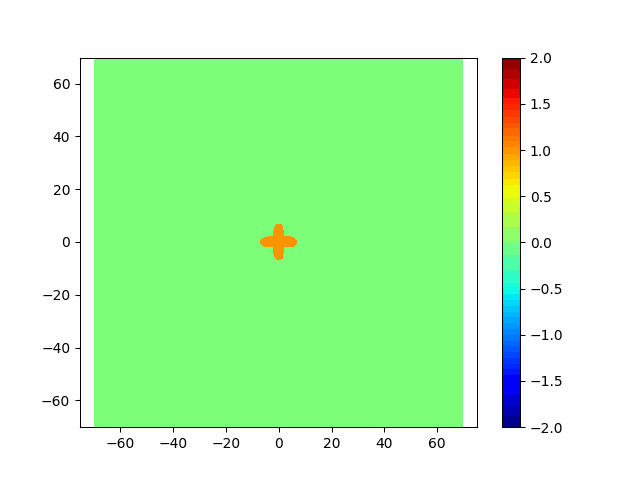
Recreation of Coombes et al. (2012)
- $\color{blue}{u}(t, \vecx)$ - Activity
- $\color{green}{w}(\vecx, \vecy)$ - Connectivity kernel
- $\color{red}{f}[\color{blue}{u}]$ - non-linear firing rate function
Projection Method (Avitabile 2023)
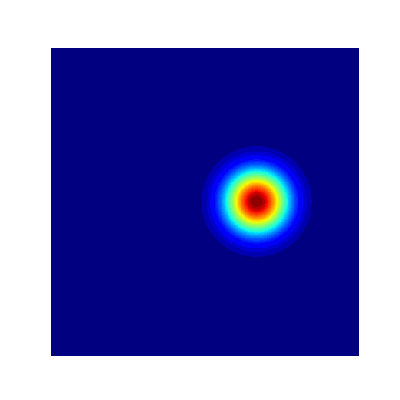
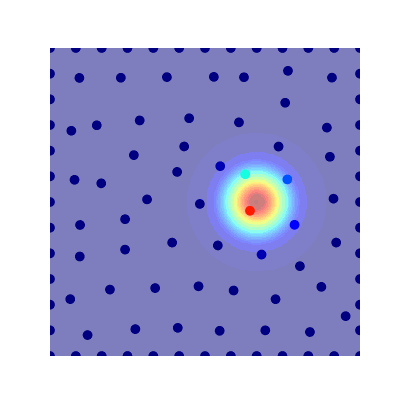
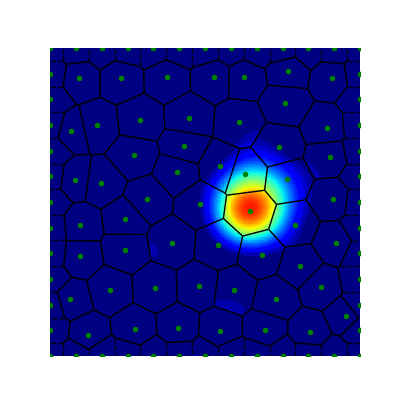
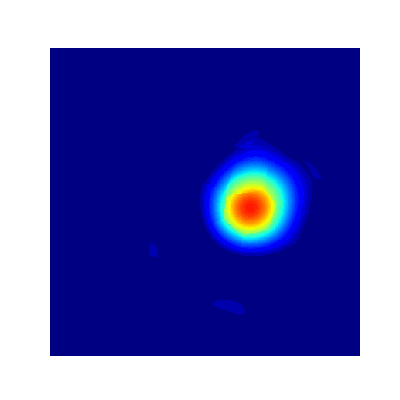
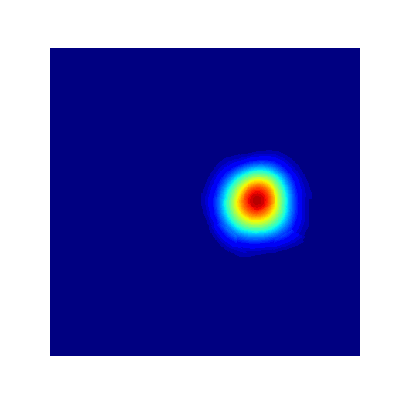
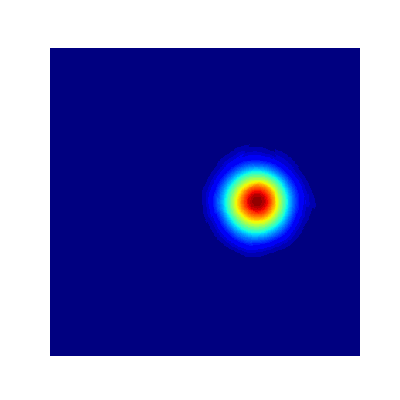
- True Solution
- Collocation
- Projection
- Error
- Projection
- Quadrature
- Time Integration
- $\text{Error} \sim \mathcal{O}(n^{-\text{order}/\text{dim}})$
Radial Basis Function Quadrature Formulae
RBF-QF Goal:
- Given a set of points $\{\vecx_i\} \subset \Omega$
- find weights $\{w_i\}$
- such that $\int_\Omega f \approx \sum w_i \ f(\vecx_i)$
RBF-QF Algorithm
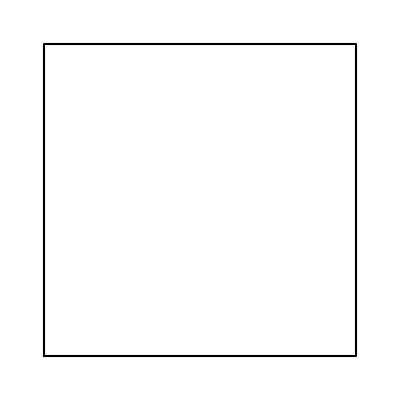
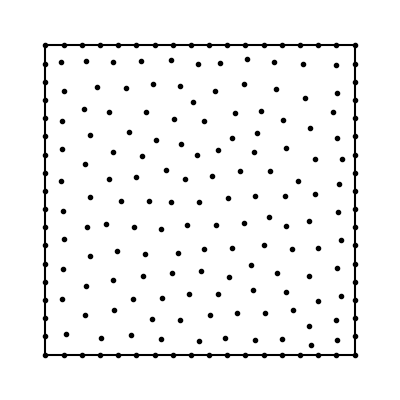
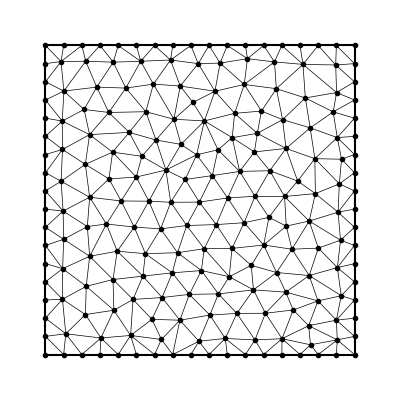
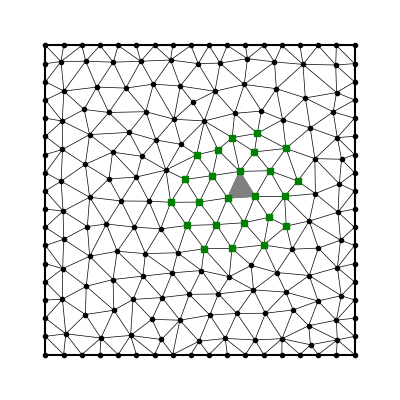
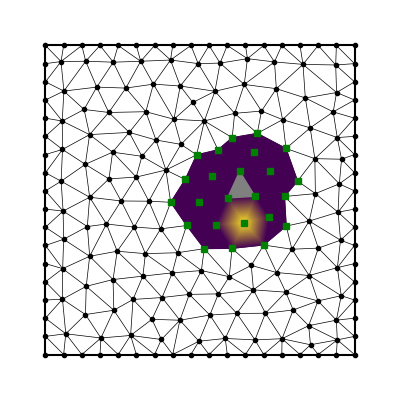
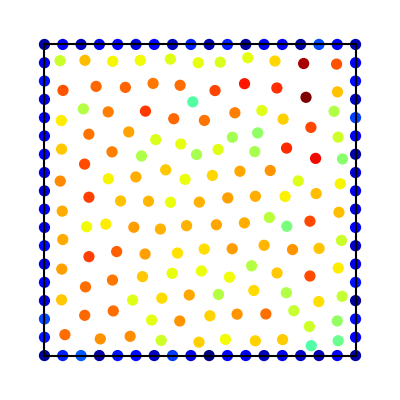
- choose quadrature nodes
- partition domain
- choose stencils
- integrate RBF interpolant
- sum over stencil and elements
Experimental Results
Gaussian Test Functions
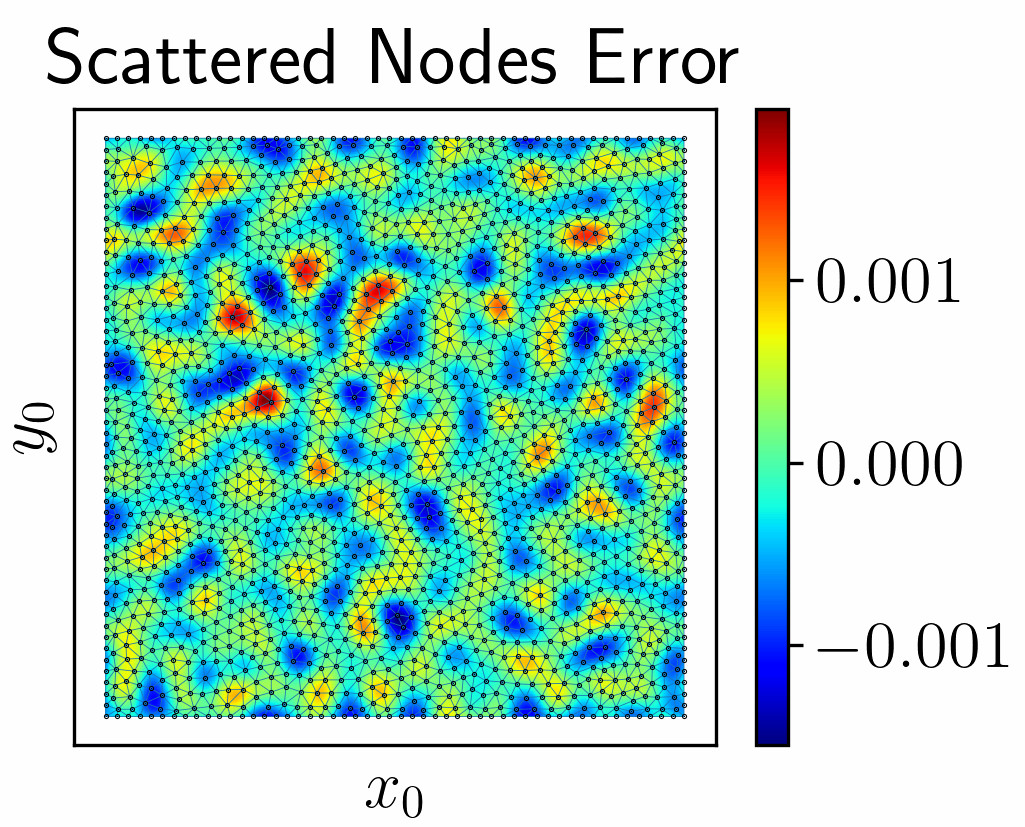
Gaussian Test Functions

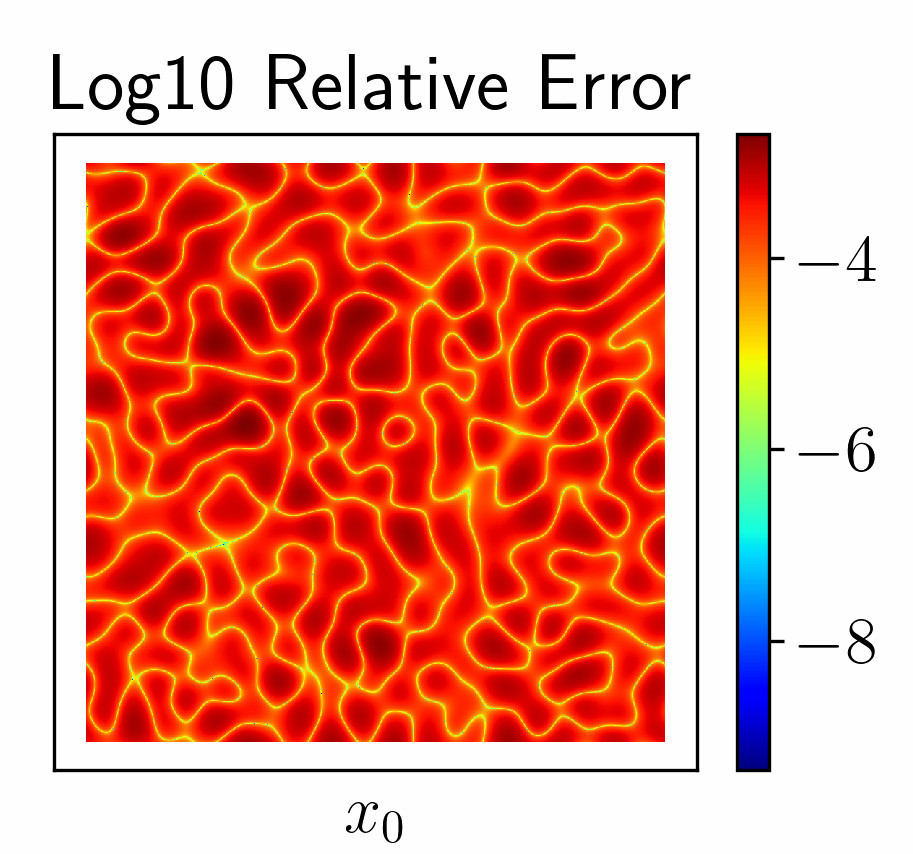
Gaussian Test Functions
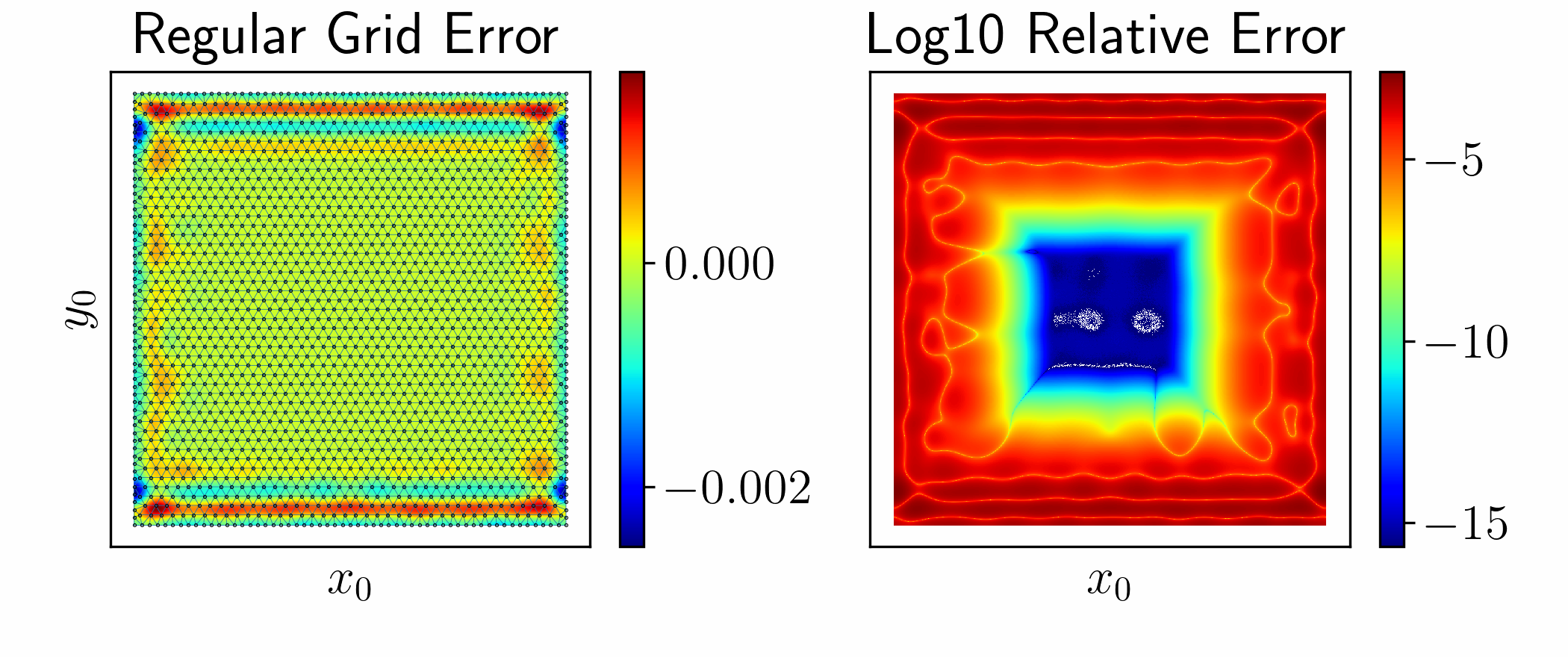
Quadrature Convergence
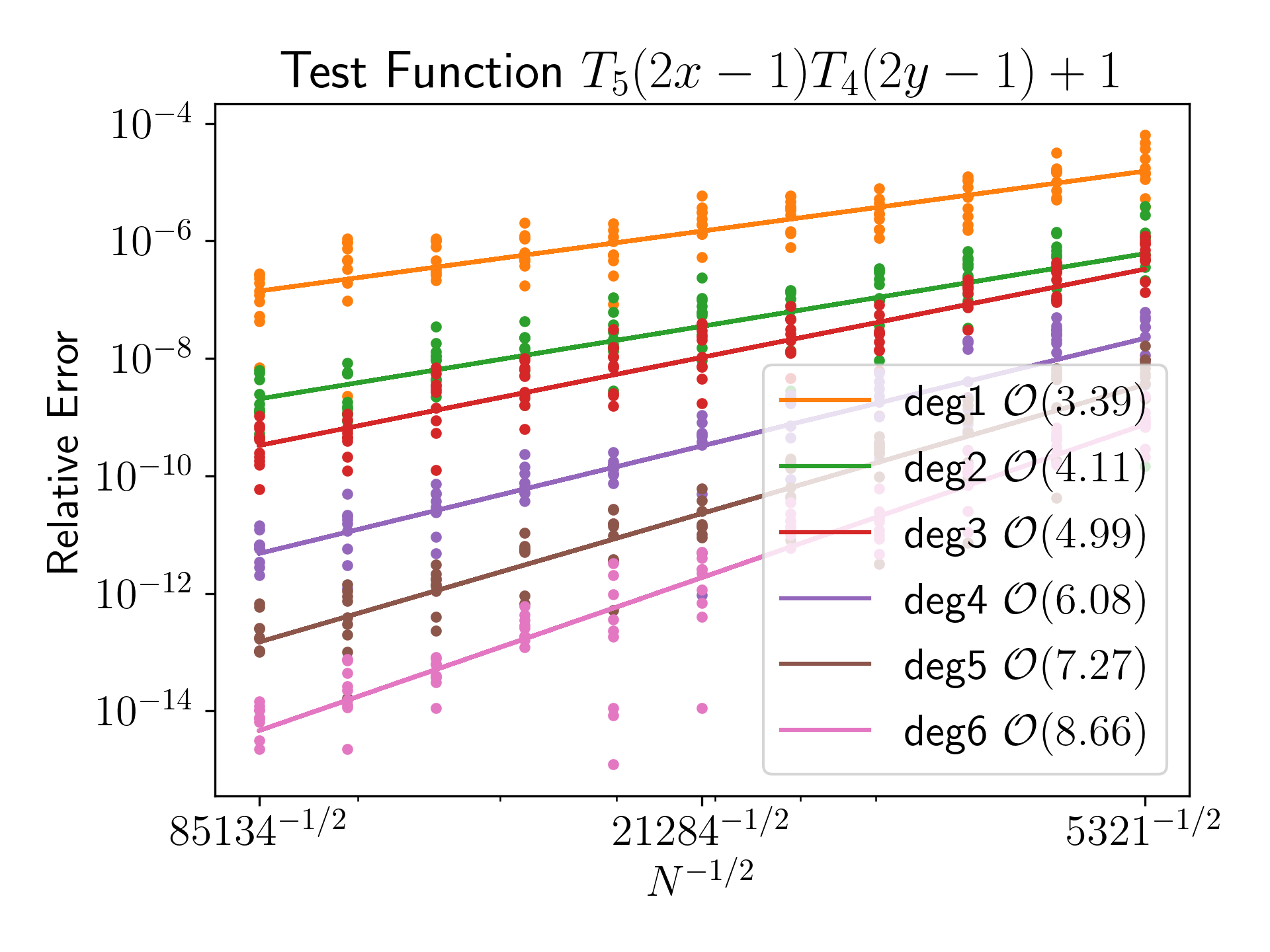
Testing manufactured solution
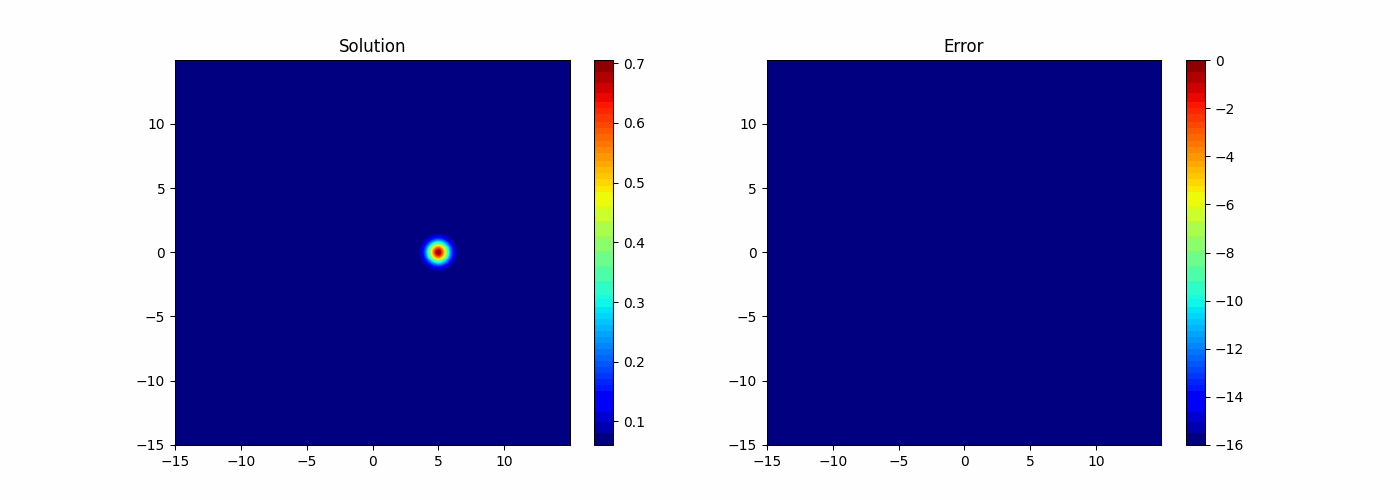
Convergence

Next Steps
- Adapt to surfaces.
- Incorporate cortical spreading depression (CSD).
- Study the effects of realistic cortical curvature on CSD wave generation and propagation.
Our Contributions
- Neural Field Solver
- High Order Accurate
- Flexible Geometry
- Simplifed Error Analysis
- Adapt to Surfaces
- Couple with CSD

Auxiliary Slides
The Kilpatrick Lab

Prof. Zack Kilpatrick

Dr. Tahra Eissa
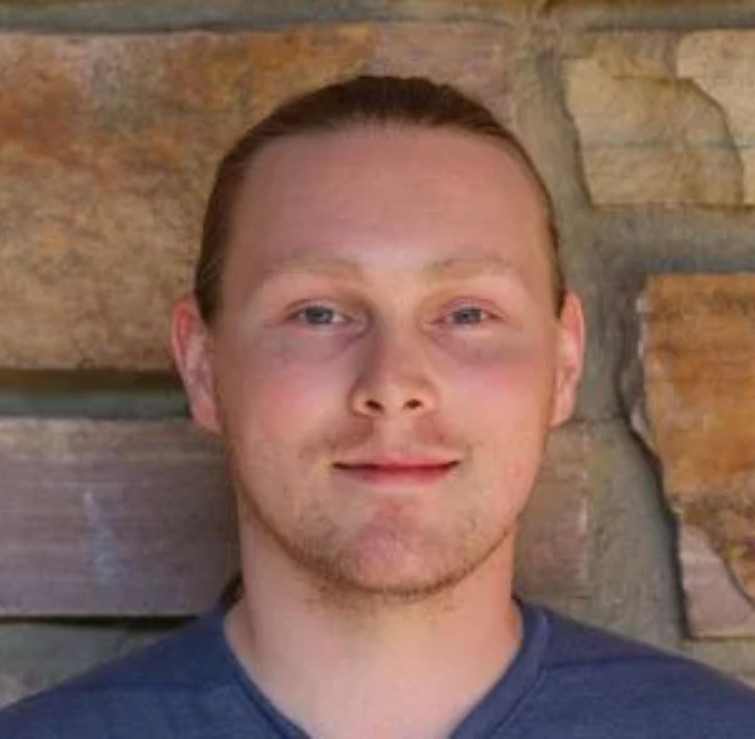
Sage Shaw
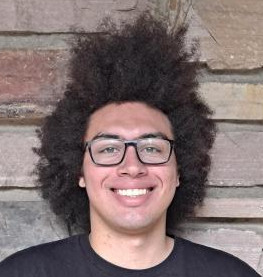
Noah Parks
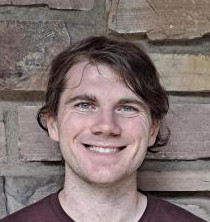
Will Magrogan
Retinotopic Map
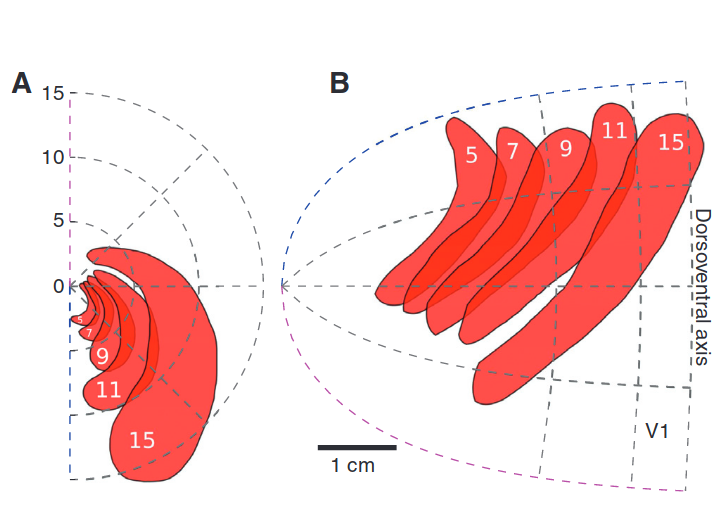
Zandt, Haken, van Putten, and Dahlem (2015)
Reaction Diffusion Model
$$\begin{align*} u_t &= \underbrace{u - \frac{1}{3}u^3}_{\text{excitable}} - \underbrace{v}_{\text{recovery}} + \underbrace{D\nabla^2 u}_{\text{Diffusion}} \\ \frac{1}{\varepsilon} v_t &= u + \beta + \underbrace{K\int H(u) d \Omega}_{\substack{\text{neurovascular}\\\text{feedback}}} \end{align*}$$
